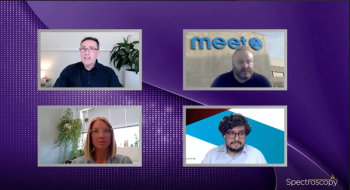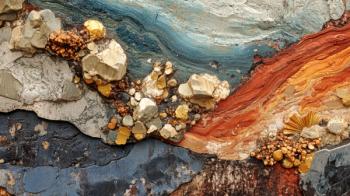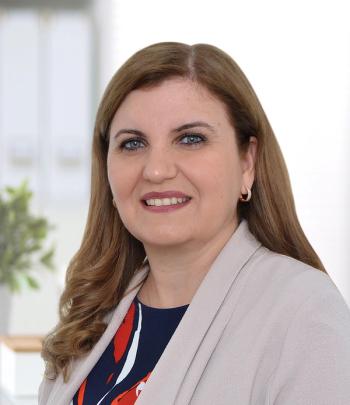
- Spectroscopy-06-01-2020
- Volume 35
- Issue 6
ICP-OES Capabilities, Developments, Limitations, and Any Potential Challengers?
In celebration of Spectroscopy’s 35th Anniversary, leading experts discuss important issues and challenges in analytical spectroscopy.
Inductively coupled plasma–optical emission spectrometry (ICP-OES) has been one of the most widely used atomic spectroscopy techniques for the last 40 years (1). This paper assesses its current analytical performance, shortcomings, developments over the last 35 years, and its future prospects.
ICP-OES Capabilities
ICP-OES provides robust, rapid, multi-element analysis of solutions (including digested solid samples). Element “lines” (peaks at characteristic wavelengths) result from bound outer shell electron transitions from an excited state to a lower energy level. Detection limits are a part per billion (ng/mL) or below for most elements. Elements that emit brightly, including Be, Mg, Ca, Sr, and Ba, have detection limits of tens of parts per trillion (pg/mL) or below. A desolvation system following a heated spray chamber or ultrasonic nebulizer can further improve detection limits by ~10x. Once samples are prepared and the instrument is calibrated, the analysis time per sample can be less than 1 min.
The biggest challenger to ICP-OES currently is ICP–mass spectrometry (ICP-MS). ICP-MS has lower (up to 1000x) detection limits but has disadvantages compared to ICP-OES for analyses where ICP-OES detection limits are sufficient. ICP-MS costs more (instrument purchase, time and cost of maintenance), is limited to samples with 10x lower total dissolved solids, and can suffer from severe matrix effects.
ICP-OES Limitations
The main limitations of ICP-OES are continuum background emission, higher detection limits than ICP-MS, spectral overlaps, and matrix effects.
Continuum background emission. Continuum background emission occurs at all wavelengths because it involves unbound electron transitions (ion-electron recombination or Bremsstralung). The sensitivity (signal/concentration) and background fluctuations determine detection limits. Near the detection limit the average, sample dependent, background emission intensity can be about 30x to 100x the net analyte line intensity.
Detection limits. Elements including As, P, Rb, Se, and S have detection limits of a few part per billion (ppb, ng/mL). Detection limits for F, Cl, and Br are typically in the hundreds of ppb (ng/mL) or more unless the spectrometer can measure lines below about 150 nm. The noble gas elements, O, N, and H, are typically not measured because they suffer from poor sensitivities or intense blank signals, or both, because of entrained air.
Spectral overlaps. Elements may emit a few wavelengths (such as K and Na) or thousands of wavelengths (such as rare earth elements and Th and U). Spectral overlaps can occur and, if not accounted for, accuracy can be degraded. However, because emission peaks are narrow (~0.005 nm or less) the emission spectrum consists of more than 128,000 different, resolvable wavelengths over the 160 to 800 nm range. A typical ICP-MS instrument (with a quadrupole mass spectrometer) has a bandpass of about 0.6 amu, resulting in about 386 resolvable mass/charge values from 6 to 238.
Matrix effects. Elements in the sample at high concentrations (≥500 ppm [µg/mL]) can affect sensitivity. Ionization and excitation in the ICP are mainly a result of collisions between atoms or ions and fast-moving electrons. Therefore, if components in the sample cause a change in the electron temperature or concentration in the plasma, the sensitivity can change.
Automation. ICP-OES instruments with an autosampler allow unattended analyses. However, the instrument does not inform the operator when a matrix effect or spectral overlap has likely occurred for a particular sample, nor automatically correct for them.
Expertise and cost. More and more, ICP-OES buyers want instruments that require less expertise to operate. Expertise is required to identify and deal with the potential problems (spectral overlaps, matrix effects) and to develop methods (including selection of wavelengths, and internal standards if necessary). Lower cost is also desired. Typically ~16 L/min of Ar keeps the plasma torch from melting and sustains the plasma.
ICP-OES Developments
There have been several important advances in ICP-OES over the last 35 years (Table I) and development continues (2).
Simultaneous detection. The most significant advance in ICP-OES in the last 35 years was the use of solid-state imaging detectors, typically with echelle spectrometers (3). The use of these detectors provided rapid, simultaneous multi-element analysis, flexibility in choosing analyte wavelengths, and simultaneous detection of analyte peaks and the nearby background emission.
Detection limits. Detection limits have improved ~10x since 1985 as a result of a combination of factors. End-on (axial) viewing of emission collects light from a larger region of the plasma; sensitivity and the relative standard deviation of the background improve. Simultaneous detection allows the correlated fluctuations in the background to be removed.
Solid-state generators. Solid-state generators have replaced generators with a vacuum tube power amplifier, which degraded over time. Free running solid-state generators allow impedance matching without large, tunable capacitor-based impedance matchers.
Reduced size and cost. The size and cost of ICP-OES instruments have decreased. Some current ICP-OES instruments require ~8–9 L/min Ar rather than 15–20 L/min. Recently developed torch designs may allow much further reduction in Ar gas consumption.
Analysis speed. Sample introduction systems with faster washout times, in combination with simultaneous detection, can provide sample measurement times of less than 1 min.
Spectral overlap correction. Multiple linear regression improved correction for spectral overlaps. Pure, single element spectra must be acquired for each analyte and potential spectral overlap on the analyte peak. Multiple linear regression determines the constants (a, b, and c in the equation below) that each of the single-element spectra and the background (blank) spectrum must be multiplied by so that their sum best fits the experimentally measured spectrum from the sample (a is proportional to analyte concentration):
a * analyte element spectrum + b * overlap element spectrum + c* blank spectrum = Sample spectrum [1]
Concentration uncertainty. In some cases, the precision and accuracy (that is, the concentration uncertainty) provided by ICP-OES may be insufficient. Uncertainties in measured concentrations (4) are typically much larger (5–25%) than indicated by the precision (~1%). By using closely matched standards, internal standardization, enough replicate measurements, and accounting for drift, it is possible to obtain relative concentration uncertainties better than 0.2% (5).
Future Developments
Potential challengers to the ICP?
No optical emission sources have been able to unseat ICPs by providing better analytical performance for solution samples. Most of the current challengers have advantages in cost, portability, or the ability to measure solid samples directly, but also suffer from disadvantages.
Laser induced breakdown spectroscopy (LIBS) uses a pulsed laser to vaporize, atomize, and excite the sample (6). LIBS can directly measure solid samples. LIBS can be portable. Detection limits in solids range from <1 ppm to >100 ppm (comparable to detection limits of <0.010 ppm to >1 ppm in a 1% wt/wt solution of a digested solid sample). LIBS sometimes suffers from matrix effects, insufficient reproducibility, and nonlinear calibration, although improvements are being made.
Nitrogen microwave plasma-optical emission spectroscopy (MP-OES) has the advantage of not requiring Ar gas. The nitrogen plasma gas can be obtained from air using a nitrogen generator. For most elements, particularly those with high excitation energies (such as As, Se, Cd, P, Sb, Se, and Zn) MP-OES detection limits are poorer than ICP-OES can provide.
Solution cathode glow discharges and liquid sampling glow discharges have the advantage of requiring far less power (<100 W) than an Ar ICP (~1100 W), making portable instruments possible and cost much lower. Detection limits for many elements are not yet competitive with ICP-OES. However, detection limits are being improved, in some cases dramatically (7).
Is there an atomic emission source that could provide higher sensitivity (and at the same time lower continuum background emission) to provide detection limits that are at least 10x (100x?) better than current ICP-OES detection limits at similar or lower cost? Not yet.
Intelligent Instruments?
If we will have self-driving cars, why not intelligent (“self-driving”) ICP-OES instruments that can identify and overcome potential errors without an expert instrument operator?
There are many potentially useful diagnostics to identify when spectral overlaps and matrix effects are likely occurring for a particular sample. Ion/atom emission intensity ratios and Ar emission intensities indicate plasma temperature. Comparing measured concentrations from three or four lines instead of one could be used to flag spectral overlaps and matrix effects. Semiquantitative analysis with little, if any, additional analysis time, could determine if an element (or elements) in a sample are in high enough concentration to cause matrix effects or spectral overlaps. Our laboratory often uses these diagnostics but with manual assessment. Spatial emission profiles or gradient dilution, or both could also be used (8). While many potential inputs for intelligent ICP-OES instruments have been identified, developing an intelligent instrument and validating its performance is still a huge challenge.
References
1. K. Ohls and B. Bogdain, J. Anal. At. Spectrom.31, 22–31 (2016).
2. G.L. Donati, R.S. Amais, and C.B. Williams, J. Anal. At. Spectrom. 32, 1283–1296 (2017).
3. T.W. Barnard, M.I. Crockett, J.C. Ivaldi, and P.L. Lundberg, Anal. Chem. 65, 1225–1230 (1993).
4. J.-M. Mermet, Spectrochim. Acta B 49, 1313–1324 (1994).
5. M.R. Winchester, T.A. Butler, and G.C. Turk, Anal. Chem. 82, 7675–7683 (2010).
6. D. Fernandes Andrade, E.R. Pereira-Filho, and D. Amarasiriwardena, Appl. Spectrosc. Rev. 1–17 (2020). DOI:
7. C. Yang, G.C.Y. Chan, D. He, Z. Liu, Q. Deng, H. Zheng, S. Hu, and Z. Zhu, Anal. Chem. 91, 1912–1919 (2019).
8. Y. Cheung, A.J. Schwartz, G.C.Y. Chan, and G.M. Hieftje, Spectrochim. Acta B 110, 1–6 (2015).
John W. Olesik is a Research Scientist, an Adjunct Associate Professor, and the Director of the Trace Element Research Laboratory in the School of Earth Sciences at The Ohio State University, in Columbus, Ohio. Direct correspondence to
Articles in this issue
over 5 years ago
Vol 35 No 6 Spectroscopy June 2020 Regular Issue PDFover 5 years ago
Celebrating 35 Years of Spectroscopyover 5 years ago
Handheld Near-Infrared Spectrometers: Reality and Empty Promisesover 5 years ago
One Real Challenge That Still Remains in Applied Chemometricsover 5 years ago
Far-Ultraviolet SpectroscopyNewsletter
Get essential updates on the latest spectroscopy technologies, regulatory standards, and best practices—subscribe today to Spectroscopy.





